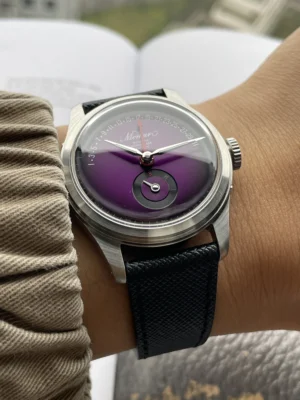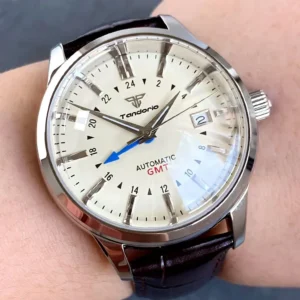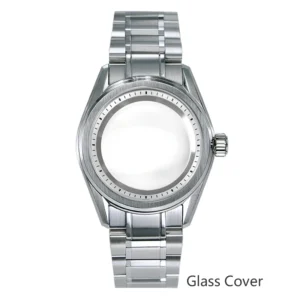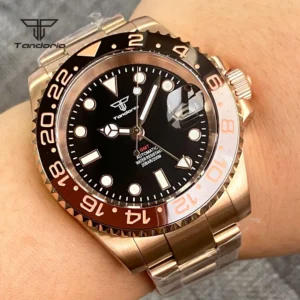1. Introduction: Navigating Time Across the Globe
In our increasingly connected world, keeping track of time across different regions has become essential for many people. Multiple timezone watches are specialized timepieces designed to display the time in two or more locations simultaneously, offering elegant solutions for global timekeeping challenges.
Despite the prevalence of smartphones, these mechanical marvels continue to hold significant appeal. They combine practicality with horological craftsmanship, providing reliable timekeeping without battery concerns or the need to wake a screen. Plus, they deliver this functionality with a distinctive style that smartphones simply cannot match.
Multiple timezone watches generally fall into three main categories: GMT watches, Dual Time watches, and World Timer watches. Each type offers different approaches to the challenge of tracking time across the globe, with varying levels of complexity and functionality to suit different needs.
Whether you’re a frequent flyer coordinating international meetings, a business professional managing global teams, or simply someone with loved ones abroad, understanding the history and engineering behind these timepieces provides valuable context for appreciating their practical elegance.
2. Who Needs a Multiple Timezone Watch?
Multiple timezone watches serve various professionals and individuals whose lives span across geographical boundaries:
- International travelers who frequently cross time zones can avoid the mental calculations that often lead to missed connections or appointments
- Business executives coordinating with teams or clients worldwide need to know when colleagues are working without constantly converting times
- Pilots and flight crews must simultaneously track departure location time and destination time
- Investors and traders monitoring multiple market opening hours across different financial capitals
- Families with members living abroad who want to know at a glance whether it’s an appropriate time to call loved ones
Beyond pure functionality, these watches offer distinct advantages. They provide instant time awareness without needing to unlock a device, perform calculations, or search for time zone converters. Many professional applications of timezone watches extend beyond simple time-telling to include coordinating conference calls, planning travel itineraries, and ensuring smooth global operations.
Additionally, a finely crafted multiple timezone watch serves as both a practical tool and a statement piece that reflects sophistication and global awareness.
3. Understanding GMT and UTC: The Foundation of Timezone Watches
To fully appreciate multiple timezone watches, it’s essential to understand the standards upon which they’re built.
Greenwich Mean Time (GMT) originated in the mid-19th century when the Royal Observatory in Greenwich, London, was established as the global reference point for time. As ships relied on accurate chronometers for navigation, having a standard reference time became crucial for determining longitude at sea. This historical legacy lives on in modern watchmaking, where GMT often refers to a watch’s ability to track a second time zone.
Today’s global timekeeping standard is Coordinated Universal Time (UTC), which has effectively replaced GMT as the world’s time standard. While there are technical differences between the two, for practical purposes in watchmaking, they’re often used interchangeably.
The world’s 24 main time zones are defined as offsets from GMT/UTC (such as UTC+1 for Central European Time or UTC-5 for Eastern Standard Time). This system forms the foundation for how multiple timezone watches operate and display time.
Understanding these concepts is crucial because multiple timezone watches fundamentally rely on the relationship between these standard reference points and local time. The evolution of dive watch technology has incorporated many of these timezone principles to create versatile timepieces for both underwater exploration and global travel.
4. GMT Watches: The Classic Traveler’s Tool
GMT watches originated in the early 1950s when increasing international air travel created a need for pilots to track multiple time zones simultaneously. The iconic Rolex GMT-Master, developed in collaboration with Pan American Airways, set the standard that many GMT watches follow today.
The defining feature of a GMT watch is its additional 24-hour hand, which completes one full rotation every 24 hours (unlike the standard hour hand that rotates twice daily). This extra hand points to a 24-hour scale, typically marked on the bezel or the dial periphery, allowing you to read a second time zone at a glance.
GMT watches come in two main varieties:
True GMT (Traveler’s GMT): The local hour hand can be adjusted independently in one-hour increments without stopping the watch, making it ideal for travelers changing time zones.
Caller GMT (Office GMT): The GMT hand can be set independently, while the main hour hand remains fixed to local time, perfect for those who stay in one place but need to track another time zone.
Using a GMT watch is straightforward once you understand the basics:
– The main hands show your local time in the traditional 12-hour format
– The GMT hand points to the second time zone on the 24-hour scale
– If your watch has a rotating bezel with 24-hour markings, you can track a third time zone by rotating the bezel to the appropriate offset

The true beauty of a GMT watch lies in its elegant simplicity. With just one additional hand, it solves a complex problem while maintaining a clean aesthetic. For those interested in exploring options, our collection of GMT automatic watches offers various interpretations of this classic design.
5. Dual Time Watches: Clarity and Elegance
Dual Time watches represent another approach to displaying multiple time zones, focusing on clarity and intuitive reading. Unlike GMT watches that use a 24-hour hand, Dual Time watches typically provide two distinct displays showing different time zones in the familiar 12-hour format.
These watches employ various methods to show the secondary time zone:
- A complete sub-dial with its own hour and minute hands
- An additional hour hand on the main dial (often distinguished by color or shape)
- A separate digital or analog window displaying the second time zone
A critical feature of quality Dual Time watches is the inclusion of AM/PM or day/night indicators for the secondary time zone. Without this, it can be unclear whether the displayed time is morning or evening in the tracked location.
Many Dual Time watches feature convenient independent adjustment mechanisms. These allow you to change the local time display when traveling without affecting the home time display—a particularly useful feature when crossing time zones frequently.
From an aesthetic perspective, Dual Time watches often achieve better dial balance and readability than other multiple timezone watches. The time displays are typically more symmetrical and easier to read at a glance, though this comes at the cost of tracking fewer time zones than World Timers.
For those trying to decide between different configurations, understanding the differences between dual timezone and triple timezone watches can help determine which best suits your specific needs.
6. World Timer Watches: Global Time at a Glance
World Timer watches represent the most comprehensive approach to multiple timezone tracking, displaying the time across major cities worldwide simultaneously. These sophisticated timepieces evolved from Louis Cottier’s ingenious design from the 1930s and remain marvels of mechanical engineering.
The defining components of a World Timer watch include:
- An outer ring displaying major world cities, each representing a different time zone
- A 24-hour disc or ring that rotates once per day
- The main hands showing the local time
To read a World Timer, you first locate your reference city (usually your current location) on the city ring. The time in any other city can then be read by finding that city on the ring and looking at the corresponding hour on the 24-hour disc. With practice, you can instantly know the time anywhere in the world.
Setting a World Timer typically involves:
1. Aligning your current location on the city ring with the current local time on the 24-hour scale
2. Setting the main hands to the current local time
3. The watch now displays accurate time for all cities on the ring
World Timers present unique design challenges due to their complexity. Fitting 24 city names, a 24-hour scale, and traditional time display onto a wearable watch requires masterful dial design. This complexity often makes World Timers more expensive than their GMT or Dual Time counterparts.

These watches are particularly popular among global business travelers and watch collectors who appreciate their mechanical complexity and comprehensive functionality. For aviation enthusiasts specifically, GMT pilot watches often incorporate World Timer elements with additional features designed for aeronautical use.
7. Comparison: GMT vs. Dual Time vs. World Timer
When considering multiple timezone watches, understanding the key differences between the three main types can help you make an informed choice:
| Feature | GMT Watch | Dual Time Watch | World Timer Watch |
|---|---|---|---|
| Number of time zones | 2-3 | 2 | 24 |
| Reading complexity | Moderate | Low | High |
| Setting complexity | Low | Low | Moderate |
| Visual complexity | Low | Moderate | High |
| Typical price range | $$ | $$ | $$$ |
| Best for | Frequent travelers needing 2 time zones | Users focused on two specific locations | Global travelers needing worldwide time |
GMT watches excel in elegant simplicity, providing essential timezone tracking without cluttering the dial. They’re ideal for travelers who primarily need to track their home time while abroad, or professionals regularly working with one additional time zone.
Dual Time watches offer the most intuitive reading experience, with both time zones displayed in the familiar 12-hour format. This makes them perfect for users who value clarity and ease of use, particularly when regularly switching focus between two specific locations.
World Timers provide the most comprehensive solution but require more dial space and typically come at a premium price point. They’re best suited for frequent international travelers or those who regularly coordinate across multiple continents.
For those with specific interests in diving, the GMT complications in dive watches combine timezone functionality with underwater capabilities, creating particularly versatile instruments.
8. How to Choose the Right Multiple Timezone Watch
Selecting the ideal multiple timezone watch requires honest assessment of your specific needs and preferences:
First, consider your primary use case:
– How many time zones do you typically need to track simultaneously?
– Do you travel frequently, or primarily stay in one location while communicating with others abroad?
– How important is quick and intuitive reading versus comprehensive coverage?
Then evaluate practical considerations:
– Legibility: Can you easily read the time zones you need at a glance?
– Size: More complications typically require larger dials – does this suit your wrist size?
– Setting ease: How frequently will you need to adjust the watch when traveling?
– Water resistance: Will your watch need to withstand swimming or diving?
Finally, consider personal preferences:
– Aesthetic appeal: Which design language speaks to you?
– Brand heritage: Do you value particular watchmaking traditions?
– Budget: What represents good value for your specific needs?
If you frequently change time zones and value simplicity, a True GMT with independent hour hand adjustment may serve you best. If you primarily track just two specific locations, a Dual Time watch might provide the most clarity. For global business travelers or those coordinating across multiple continents, the comprehensive nature of a World Timer could justify its additional complexity.
For those with active lifestyles or water sports interests, our GMT dive watch collection combines multiple timezone functionality with robust water resistance and durability.
Classic Automatic Dress Watches, Day Date Automatic Watches, Perpetual Calendar Automatic Watches
Price range: $540.60 through $574.60 Select options This product has multiple variants. The options may be chosen on the product pageClassic Automatic Dress Watches, GMT Automatic Watches, GMT Pilot Watches
Price range: $1,240.86 through $1,463.33 Select options This product has multiple variants. The options may be chosen on the product pageClassic Automatic Dress Watches, GMT Automatic Watches, GMT Dive Watches
Price range: $468.93 through $552.94 Select options This product has multiple variants. The options may be chosen on the product pageGMT Automatic Watches, Unique Automatic Watches
$420.10 Select options This product has multiple variants. The options may be chosen on the product pageClassic Style Dive Watches, GMT Automatic Watches, Gold Tone Automatic Watches, Professional Spec Dive Watches
Price range: $440.67 through $489.70 Select options This product has multiple variants. The options may be chosen on the product pageGMT Automatic Watches, GMT Dive Watches, GMT Pilot Watches
$381.14 Select options This product has multiple variants. The options may be chosen on the product page
9. Advanced Features in Multiple Timezone Watches
Beyond the basic functionality, sophisticated multiple timezone watches often incorporate additional complications that enhance their utility for frequent travelers and global professionals.
Day/night indicators are particularly valuable for GMT and World Timer watches, helping users avoid the embarrassment of calling colleagues in the middle of the night. These typically appear as contrasting colored zones on the 24-hour scale or as dedicated small windows on the dial.
Quick-set mechanisms allow travelers to adjust local time without stopping the watch or disturbing other functions. The most sophisticated versions permit jumping the hour hand forward or backward in precise one-hour increments when crossing time zones, without affecting the minute and second hands.
Calendar functions can add significant value to multiple timezone watches. Basic date displays are common, but advanced models may feature:
– Annual calendars that automatically adjust for months of different lengths
– Perpetual calendars that even account for leap years
– Date displays linked to specific time zones
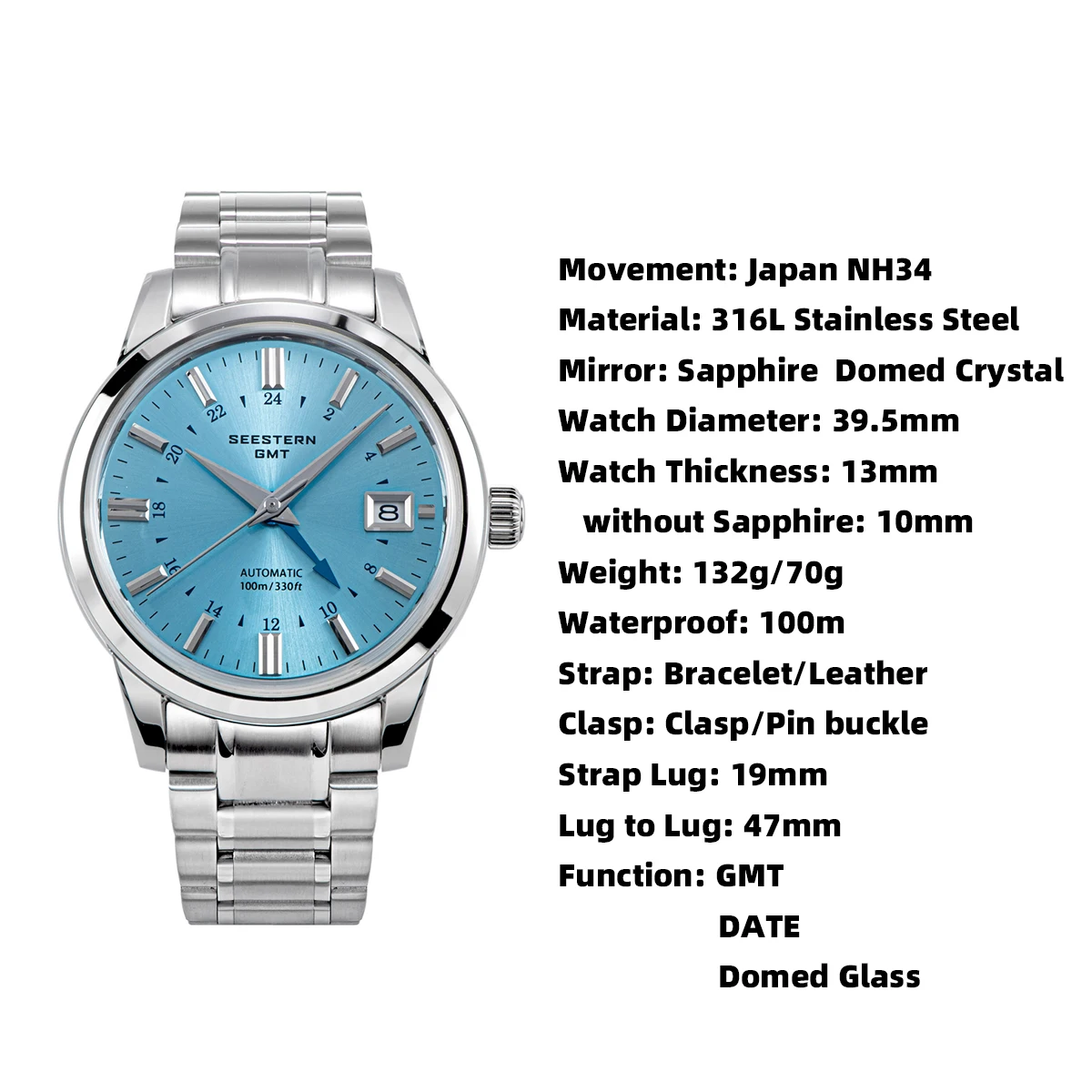
Some high-end pieces combine multiple timezone functionality with chronograph features, allowing for time tracking across different regions. For the ultimate in horological complexity, perpetual calendar automatic watches with timezone functions represent the pinnacle of mechanical watchmaking ingenuity.
10. Are Digital Watches Better for Multiple Timezones?
While this article focuses primarily on mechanical multiple timezone watches, it’s worth considering how they compare to their digital counterparts:
Digital watches offer certain advantages for timezone tracking:
– They can store and display more time zones (often unlimited)
– Setting and adjusting is typically simpler with button presses
– Many automatically update for Daylight Saving Time changes
– They often include city names directly on the display
– They’re generally more affordable
However, mechanical timezone watches maintain significant appeal for several reasons:
– No batteries required—powered by movement or winding
– Superior craftsmanship and artisanal value
– Greater durability with proper care
– Distinctive aesthetic presence
– Potential investment value
The choice ultimately depends on your priorities. If maximum convenience and number of time zones are paramount, digital options may better serve your needs. If you value craftsmanship, heritage, and the mechanical ingenuity behind these complications, a traditional watch offers unique satisfaction that digital alternatives simply cannot match.
For travelers specifically, the benefits of mechanical GMT watches extend beyond pure functionality to include reliability in varied environments and independence from charging or battery concerns.
11. How Do Timezone Watches Handle Daylight Saving Time?
Daylight Saving Time (DST) presents a particular challenge for multiple timezone watches, especially for World Timers with fixed city rings. Since different countries implement DST on different dates—and some don’t observe it at all—mechanical watches cannot automatically adjust for these seasonal changes.
For GMT and Dual Time watches, the solution is straightforward: manually adjust the relevant hands when DST changes occur in the tracked regions. This simple adjustment maintains accuracy throughout the year.
World Timer watches require more attention due to their fixed city rings. When DST is in effect, users effectively need to mentally adjust the reading for affected cities or temporarily reference a different city in the same time zone that doesn’t observe DST. For example, during summer in Europe, to read London time (which observes DST), you might need to look at the indication for Reykjavik (which doesn’t observe DST) and add one hour.
Some high-end World Timers feature interchangeable city discs—one for standard time and another for DST periods—though this remains rare due to the mechanical complexity involved.
This limitation reflects the inherent challenge of representing political time decisions (DST) within a mechanical system based on geographical reality. The evolution of professional diving watches has similarly addressed practical challenges through ingenious mechanical solutions.
12. Frequently Asked Questions About Multiple Timezone Watches
Can multiple timezone watches track unusual time zones like India (UTC+5:30) or Nepal (UTC+5:45)?
Most GMT and Dual Time watches can approximate half-hour time zones by positioning the GMT hand between hour markers. World Timers with fixed city rings typically include cities with non-standard offsets like New Delhi or Kathmandu.
How accurate are multiple timezone watches?
The accuracy of the time zones relative to each other is perfect since they’re driven by the same movement. The absolute accuracy depends on the quality of the underlying watch movement, typically ranging from +/-2 seconds per day for high-grade mechanical movements to +/-15 seconds for standard automatic movements.
Are multiple timezone watches available for women?
Yes, though traditionally they’ve been designed with larger case sizes due to the need for readable complex dials. Modern watchmaking has introduced more midsize options suitable for any wrist size while maintaining functionality.
What maintenance do multiple timezone watches require?
Beyond standard mechanical watch maintenance, the additional timezone mechanisms rarely require special attention. Regular service intervals (typically every 5-7 years) will ensure all functions continue operating smoothly. Understanding how long automatic watches last with proper care applies equally to timezone models.
How do I choose between an internal rotating bezel and external fixed bezel for a GMT watch?
External bezels offer tactical advantage—you can feel and see them move, and they typically have more pronounced markings. Internal bezels provide a cleaner aesthetic and better protection against accidental movement, but may be slightly less intuitive to use.


